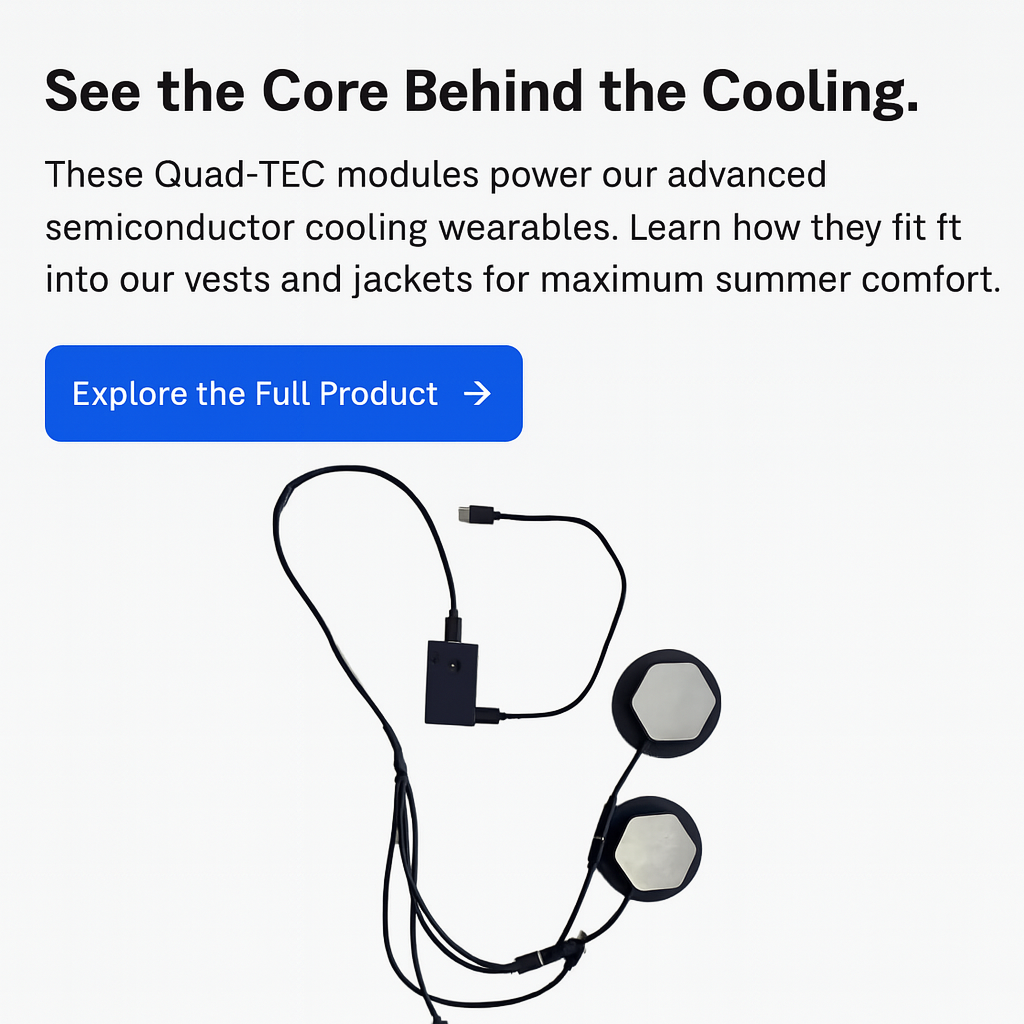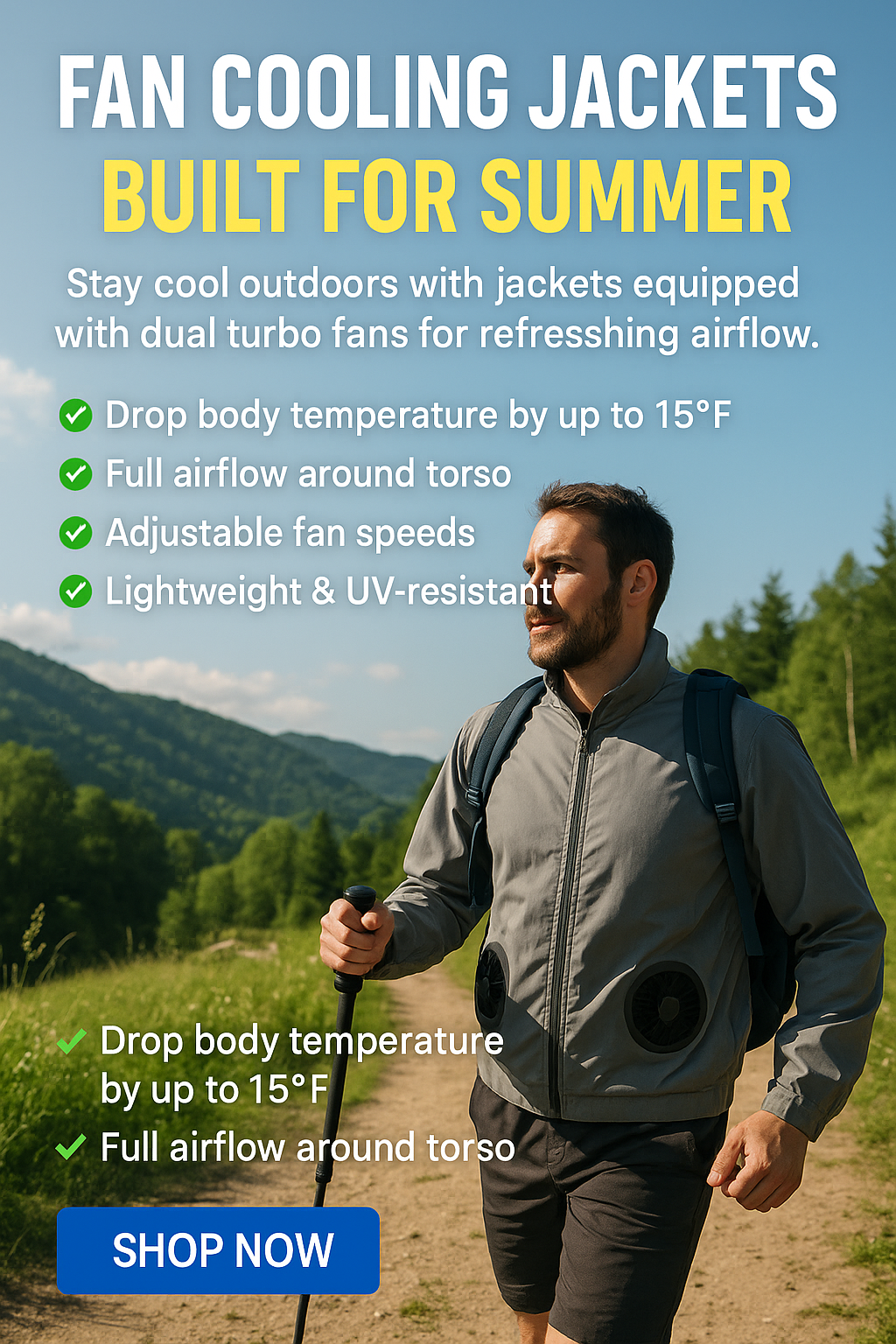📌 Stay Cool Anywhere: How Semiconductor Cooling Wearables Work
Staying comfortable in extreme heat is more than a luxury — it’s essential for safety and productivity. From outdoor construction sites to summer sports, wearable semiconductor cooling vests and shirts are changing the game. But how do they work? Let’s break down the science behind LITEGUEST’s Peltier effect-based cooling wearables and why they’re the future of personal climate control.
🔬 1. Core Principle: The Peltier Effect
At the heart of every semiconductor cooling vest or shirt is the Peltier Effect. This effect occurs when an electric current flows through the junctions of two different conductors or semiconductors in a thermoelectric chip — also called a TEC (Thermoelectric Cooler).
When powered:
One side gets cold — it absorbs heat from your body.
The other side gets hot — it releases the heat into the air.
By efficiently managing heat transfer on both sides, a high-quality TEC module can deliver an instant cooling effect in seconds.
🧩 2. Integration in Wearable Cooling Gear
A typical wearable semiconductor cooling system includes multiple layers:
✅ Skin-contact fabric: Soft, breathable, and skin-friendly for long hours of wear.
✅ TEC module layer: Ultra-thin P/N junctions packed in a flexible, lightweight form.
✅ Heat dissipation layer: Uses silent fans or advanced graphite sheets to remove heat from the hot side.
✅ Smart control unit: Adjusts current, temperature levels, and keeps operation safe.
✅ Power supply: Runs on a 5V or 12V portable power bank (USB-C powered for easy use).
This compact structure makes semiconductor cooling vests practical for real outdoor work and recreation.
⚙️ 3. Technical Advantages & Innovations
Compared to traditional compressor-based cooling, Peltier-based wearables offer big benefits:
No moving parts: Solid-state durability means fewer failures.
No refrigerants: Eco-friendly and chemical-free.
Silent & vibration-free: No buzzing or shaking parts.
Fast response: Starts cooling in just 3–5 seconds.
Compact & portable: Lightweight enough for vests, shirts, insoles, and more.
Smart adjustable cooling: Stay comfortable at your preferred temperature.
These breakthroughs make wearable semiconductor cooling ideal for outdoor workers, athletes, and heat-sensitive tasks.
🏗️ 4. Real-World Applications
Where can you use a semiconductor cooling vest or air-conditioned jacket? Almost anywhere high temperatures are a challenge:
Outdoor work: Construction, logistics, delivery, warehouse operations.
Recreation: Cycling, fishing, hiking, camping.
Future-ready: Next-gen wearables may include flexible batteries and AI-powered smart temperature control for precise comfort.
🔍 5. Challenges & Future Directions
Like all tech, wearable cooling is evolving fast — but some hurdles remain:
Heat dissipation: Effectively removing heat from the hot side is vital.
Flexibility: Researchers are developing bendable thermoelectric materials for full-body mobility.
Energy efficiency: Extending battery life without losing cooling power.
Ergonomic design: Balancing cooling performance with weight and comfort.
The good news? Innovations are moving quickly, and LITEGUEST is committed to pushing the limits of smart personal cooling.
✅ Conclusion
Wearable semiconductor cooling is a major step forward in personal thermal management. By harnessing the Peltier Effect, these devices deliver quiet, portable, eco-friendly cooling — no compressors or chemicals needed. From extreme work conditions to outdoor adventures, the future is cool.
Stay cool, stay productive — with LITEGUEST.



